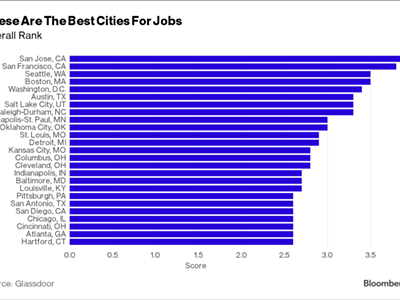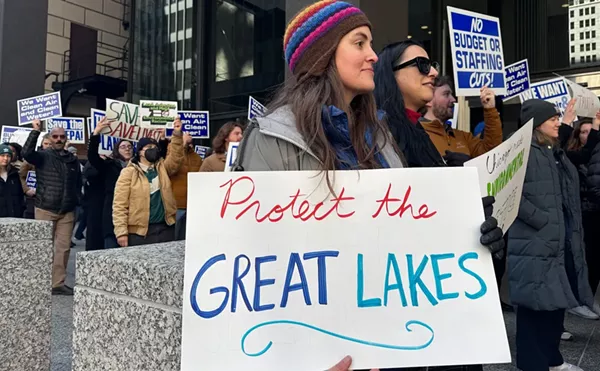A few weeks ago I spoke with a guy who mentioned what a small city Detroit has become. As a proud Detroit defender, I pointed out that our city is still one of the top 20 for population in the United States.
Then the U.S. Census Bureau came out with the news last week that Detroit had dropped from 18th to 21st — revealing me as a misinformed liar. Apparently the anecdote that Detroit is just a big small town is becoming more and more demonstrably true.
At its population peak in the early 1950s Detroit was the fourth largest American city. Only New York, Chicago, and Philadelphia were bigger. Not only were we bigger, we were the center of worldwide manufacturing. Henry Ford's moving assembly line was the high-tech innovation of the early century, and people still came from around the world decades later to tour the River Rouge plant.
This was the Motor City. Motown music ruled the airwaves across the nation in the 1960s. When relatives from the South visited, they had the added thrill of crossing over to Canada and visiting another country. We're an international city.
Detroit boasts, then and now, a team for every one of the major league sports. And although the Lions moved to Pontiac, then returned to Detroit, and the Pistons moved to Auburn Hills, we've never gone through the serious possibility of a team leaving the market — something lots of other cities have to deal with.
At least the news that our population has dropped to 21st place came with a spoonful of sugar: The population loss has slowed down. After averaging a loss of 24,000 each year in the 2000s, the latest number shows an annual drop of less than 10,000 people. That has to make Mayor Mike Duggan happy. One of the cornerstones of his administration has been the effort to staunch the outflow. If we don't have people, we don't have a tax base, eyes on the street, services, and all the vitality that comes from having a strong population.
The changing population dynamic is reflected in my neighborhood. The last empty house on my block was bought and renovated this year. All but one of the last five or six households to move onto my block moved here from outside the city, some from outside the state.
We're changing, and changing fast. Some of that change is spilling over into the neighborhoods. I was at a live broadcast of MiWeek Roadshow at the University of Detroit Mercy a few weeks ago when Maurice Cox, planning director for the city, announced: "Hold on, we're coming ... 12 months from now, Fitzgerald will be blight-free."
He was talking about the Fitzgerald Community, bounded by Fenkell, McNichols, Livernois, and Wyoming. There are so many blighted, rotting houses in the area, it's depressing. So it's surprising to hear a solid declaration and deadline for cleaning up the area.
"It's time to turn our full attention to the soul of the city, the neighborhoods," Cox says.
As we grow our souls, hopefully we'll be growing our population too. None of this comes easily; one of the issues coming to fore is the tension between native or longtime Detroiters and newcomers. Many natives have been holding on, some surviving in a hand-to-mouth existence. Many newcomers come in with available resources that many natives can't muster. And many newcomers just don't understand how Detroiters could let things get so bad. There is a clash of cultures that needs to be overcome.
Another example of this tension comes with the Venice Architecture Biennale, a top-drawer design exhibit in Italy. That has been drawn into the fray because the U.S. exhibit is dedicated to Detroit. It opened this past weekend, but before it opened there were complaints from some Detroiters that outsiders who don't know our city — few Detroiters are actually involved in the project — are maintaining an outmoded way of approaching development.
The fighting started before the Biennale exhibit even went public. Change is not easy, and a lot of people have opinions about how that change should happen. And in Detroit, we seem to like to fight about it. Change always seems to come with a fight.
Remember the Heidelberg Project? The art installation is now accepted as a part of the city that attracts visitors from around the world. But it was twice bulldozed by two different mayors who considered it an eyesore. We're fighting about medical marijuana stores on blocks that are dying with empty buildings. We're fighting about agriculture and where we can have farms, livestock, and farmers markets. We're fighting about who is a true Detroiter.
All this fighting is not necessarily a bad thing. It shows that people care about their communities. If the population trend is to turn around, people who live in the neighborhoods need to care about them. They can't build enough fancy condos and apartments downtown to drive the population up if neighborhoods languish in disarray. People will live in neighborhoods, because that's where they find a good quality of life. If we can achieve that, the city's population will grow.
It really doesn't matter whether our population checks in at No. 18 or No. 21. It may be a point of pride to say we're in the top 20, because the United States is a place where "the bigger, the better" is a development philosophy. What truly matters is that Detroit successfully works for its people — if that happens, the population will grow.
Detroit has rebuilt or reinvented itself a few times over. The whole place burned down in 1805, and we came back. After the 1890s economic depression, we became the manufacturing center of the world and used that to become the "arsenal of democracy" in World War II. By the way, the last time Detroit's population was outside the top 20 in the nation was 1850, before the Civil War.
The city is coming back again. It's the details and direction of that recovery that will make the difference.
Let's have the fight and get on with it.
Make the peace
While we're doing all this fighting in Detroit, we should also pay attention to how to resolve the conflict when it's over. The Detroit Area Restorative Justice Center is hosting a Peacemaking Circle 101 Training on Saturday, June 11. The training for neighborhood organizations, community centers, and others will focus on restorative practices and the basic tools for peacemaking at the neighborhood level. Detroiters Cynthia Tobias, Kezia Curtis, and Marcia Lee will coordinate the interactive workshop. Call 313-855-5848 or go to detroitrjcenter.wordpress.com for more information.
Carr Center caper
Recent news that the Virgil Carr Center in Harmonie Park will be moving left me shaking my head. The Carr Center is a nonprofit arts organization that's been presenting arts and education events at the location since 2009, including world-class jazz programs. The organization will be vacating the city-owned property in 2017 in order to make space for a commercially driven development that brands the area as the Paradise Valley Cultural and Entertainment District.
Paradise Valley was an area near Harmonie Park that was the center of black business and entertainment that was destroyed when I-75 was built. Essentially, the city is moving out an African-American cultural organization – that helped hold the area together when it wasn't prime real estate — in order to create an entertainment district that pays homage to African-American culture. It doesn't make sense to me, but perhaps the status of the Carr Center as a nonprofit doesn't make sense to the Detroit Economic Growth Corp., which rejected their proposal. Here's something else we can fight about.







